Making mashed potatoes that are just right can be a bit of a puzzle, especially when they turn out too runny.
I’ve had my share of mashed potato mishaps, but I’ve learned it’s all about getting the consistency perfect.
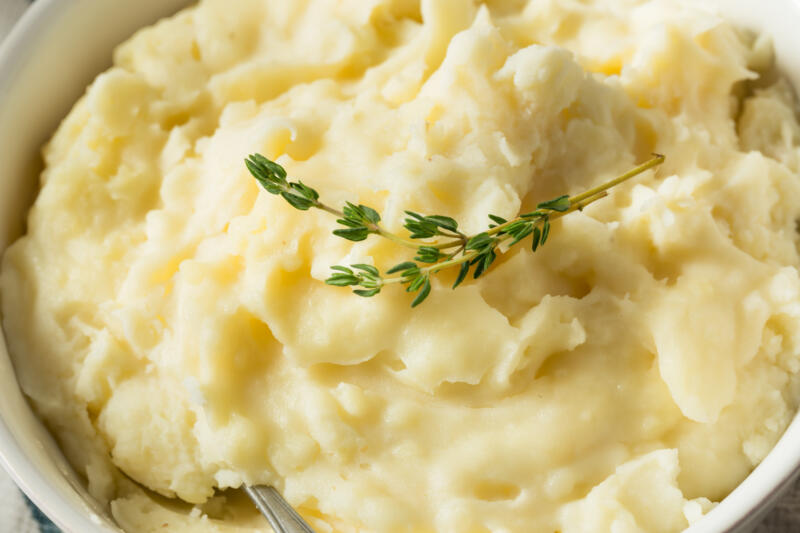
It’s not just about adding more butter or milk; sometimes, you need to get a bit creative to achieve that thick, creamy texture we all love.
Let me share some tricks I’ve picked up along the way to help you avoid the soupiness and get your mashed potatoes just right.
Highlights
- Thickening Agents Are Key: I’ve discovered that adding a bit of cornstarch or powdered milk can work wonders in thickening up mashed potatoes without altering their taste much. It’s a simple fix that can save the day.
- Heat Helps: After mashing, I sometimes put the potatoes back on low heat and stir them to evaporate any extra moisture. This little step can make a big difference in getting rid of that unwanted runniness.
- Baking for the Win: If all else fails, spreading the mashed potatoes in a baking dish and popping them in the oven not only helps thicken them up but also gives a nice, crispy top layer that’s absolutely delicious.
In this article:
Necessary Ingredients and Equipment
Let’s ensure we have all the necessary ingredients and equipment at hand. Here’s what you’ll need:
- Potatoes – for optimal outcomes, opt for a starchy type such as Russet or Yukon Gold.
- A large pot – for boiling the potatoes.
- Water – to boil the potatoes.
- Salt – to boost their flavor profile.
- A thickening agent – this could be cornstarch or powdered milk.
- Milk or cream – to add richness and creaminess to your mashed potatoes.
- Butter – for that extra touch of flavor and creaminess.
- A masher or ricer – essential tools for achieving the potato texture you prefer.
- Optional ingredients – consider adding cheese for a richer flavor or herbs for a touch of freshness.
Understanding the Basics
Before we delve into the specifics of thickening mashed potatoes, it’s essential to understand some fundamental concepts.
What Causes Runny Potatoes?
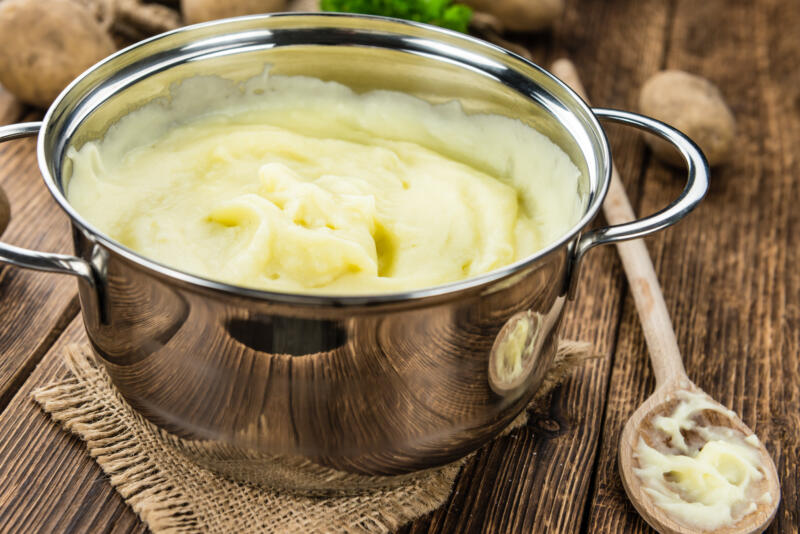
Runny mashed potatoes can be a real letdown.
The common culprits behind this undesirable outcome are adding too much liquid, such as milk or cream, or residual water from boiling.
Another is insufficient draining of the potatoes post-boiling.
For instance, failing to allow boiled russet potatoes to adequately dry before mashing can result in a soggy, flavorless mash – a result that is far from desirable!
Overcooked potatoes can also become waterlogged and lead to a runny mash. Cook the potatoes just until they’re tender.
Moreover, the choice of potato can significantly impact the outcome. Opting for potatoes that aren’t starchy enough can make it challenging to achieve the perfect consistency, as starchy potatoes yield a fluffier and creamier mash.
Employing tools like food processors, blenders, or hand mixers might overdo the mashing process.
For optimal texture, it’s often advised by many chefs to opt for a potato masher or ricer, as these offer a gentler touch, ensuring potatoes retain a light and fluffy texture.
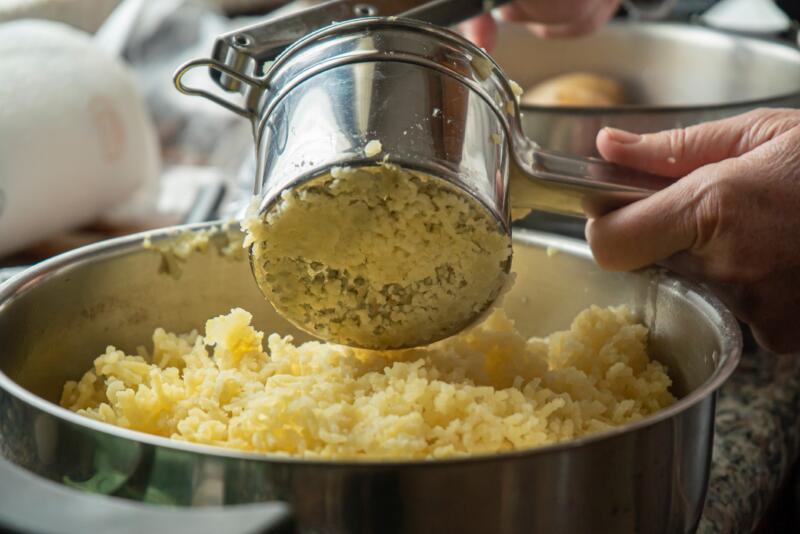
By being aware of these potential pitfalls, you can take steps to avoid them and ensure your mashed potatoes come out perfectly thick and creamy every time.
What is a Thickening Agent?
A thickening agent helps to add density to a liquid without significantly modifying its other characteristics.
In the context of mashed potatoes, a thickening agent helps achieve a thicker, creamier consistency.
Common thickening agents include cornstarch and powdered milk.
Among these, cornstarch is often the preferred choice due to its superior thickening power.
How to Achieve the Perfect Consistency
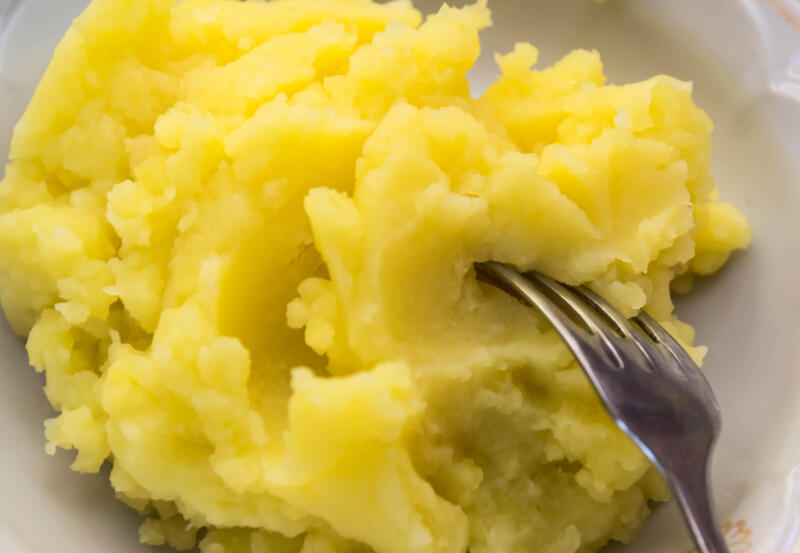
Getting the ideal texture in mashed potatoes requires a careful mix of ingredients and methods.
Thickening Agent
You might add a thickening agent like cornstarch or powdered milk to your mashed potatoes.
Start with a small amount, mix it in, and add more if needed until you reach your desired consistency.
Heat
After mashing, return the potatoes to low heat and stir continuously. This helps evaporate any excess moisture, resulting in thicker mashed potatoes.
Baking
Transfer your mashed potatoes to a baking dish and bake in the oven. This method helps to evaporate excess moisture and gives your mashed potatoes a delightful crust.
Additional Cooked Potatoes
Should your mashed potatoes turn out too watery, simply cook and mash some extra potatoes and blend them in to boost the thickness.
Dehydrated Potatoes
Adding a small amount of dehydrated potato flakes can absorb excess moisture and thicken your mash without altering the flavor significantly.
Top Potato Varieties for the Perfect Mash
The type of potato you choose can greatly affect the taste and texture of your mashed potatoes.
1. Starchy Potatoes
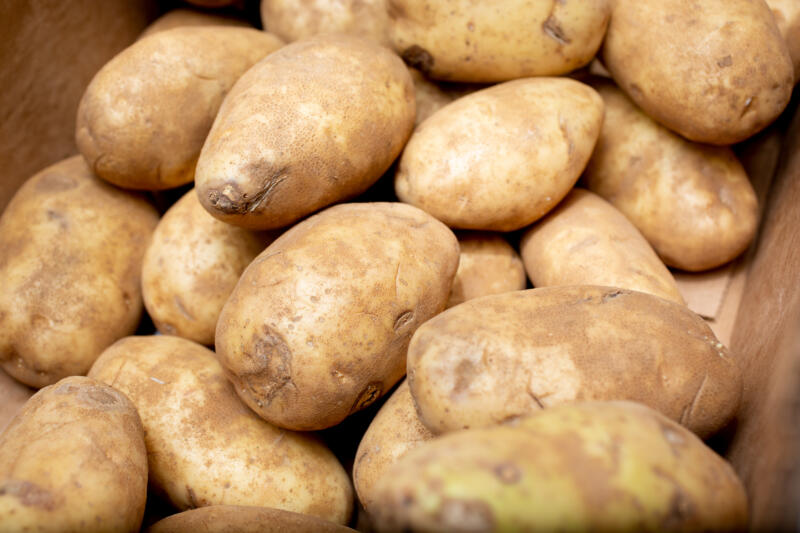
Russet potatoes are the classic choice for mashed potatoes.
They have a high starch content and become light and fluffy when cooked.
These potatoes boast a high starch content while maintaining low moisture and sugar levels, making them perfect for baking, mashing, frying, or roasting.
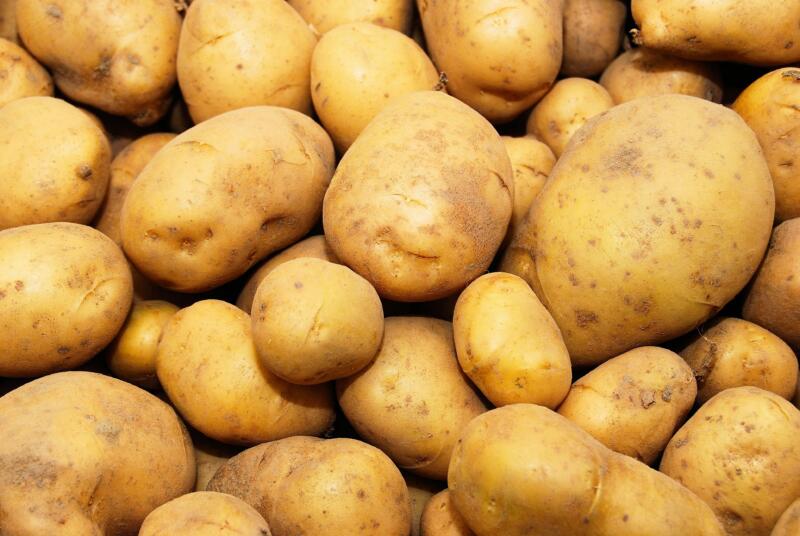
Kennebec potatoes, with their medium to high starch levels, are excellent for mashing. They offer a velvety, creamy consistency paired with a subtle taste.
2. All-Use Potatoes
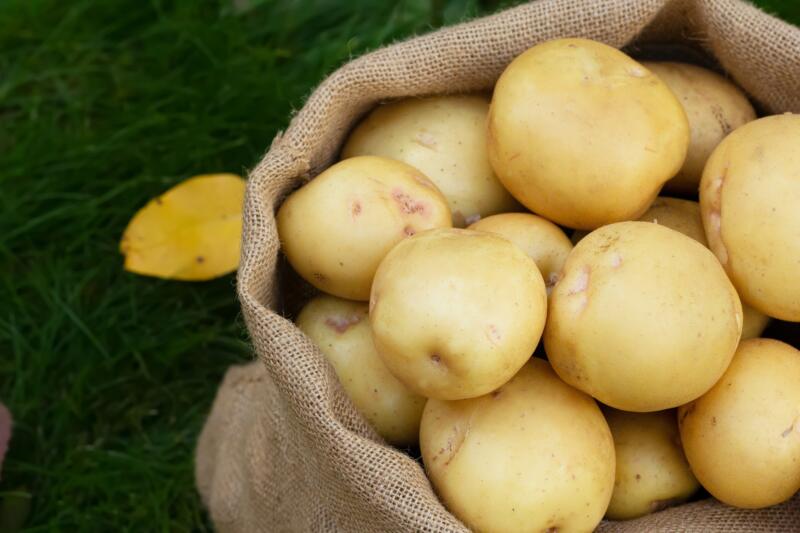
Their moderate starch content allows them to be suitable for a range of cooking techniques, mashing included.
When used for mashed potatoes, all-purpose potatoes yield a texture that is less fluffy than starchy potatoes but smoother than waxy potatoes.
Yukon Gold potatoes boast a moderate starch level and come with an inherent buttery taste. They make for a creamier, denser mashed potato than russets.
White potatoes strike a balance between starchy and waxy potatoes.
Their taste is neutral, allowing the flavors of your added ingredients to shine through.
3. Waxy Potatoes
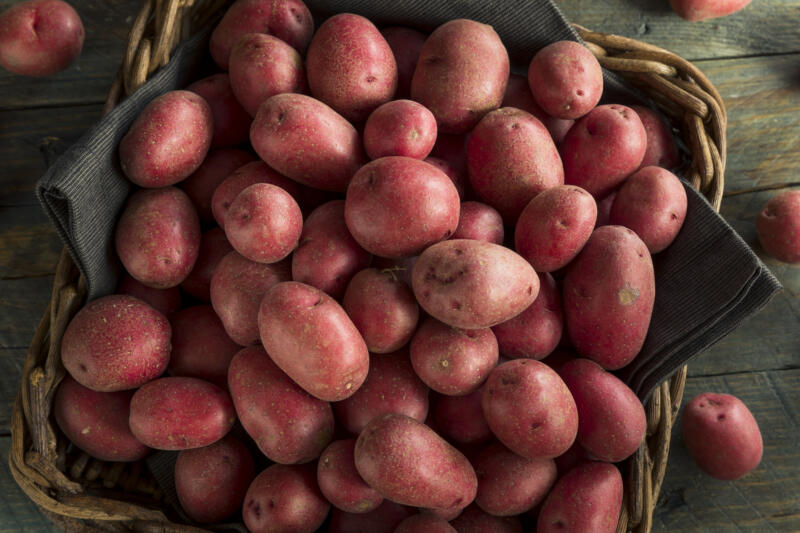
Waxy potatoes, like red potatoes, can also be used but may require more mashing and a bit more thickening agent to achieve a creamy consistency.
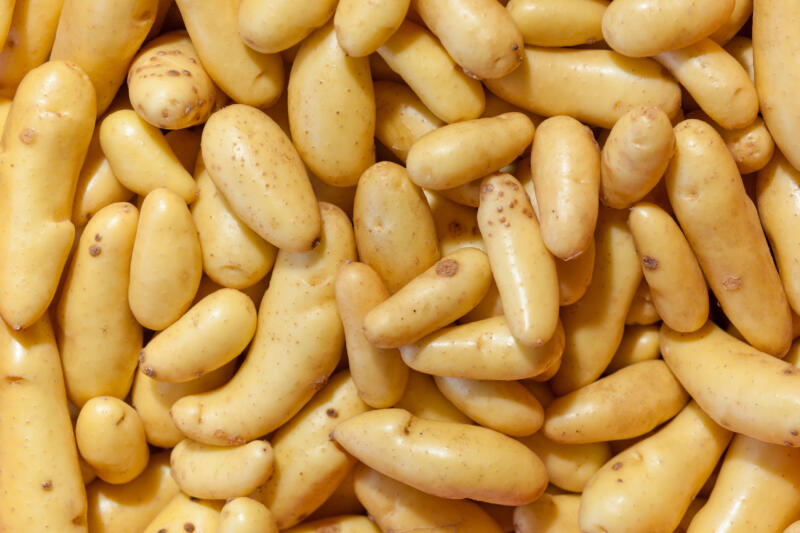
These potatoes, with their high moisture and low starch content, are perfect for dishes like salads or casseroles where maintaining their structure during cooking is key.
Adding Flavor to Mashed Potatoes
Adding flavor to your mashed potatoes can transform them from good to great.
Consider using different types of butter, such as garlic butter or herb-infused butter, for a flavor boost.
Fresh herbs like chives, rosemary, dill, or parsley can add a touch of freshness.
While cheeses like cheddar or Parmesan can lend a rich, savory note to your dish.
Incorporating nutmeg and cream into your mashed potatoes can significantly elevate their flavor profile.
Nutmeg, offering a subtly sweet and warm flavor, brings an added layer of richness to the dish.
On the other hand, cream enhances the texture, making the mashed potatoes incredibly smooth and rich.
Alternative Adjusting Ingredients
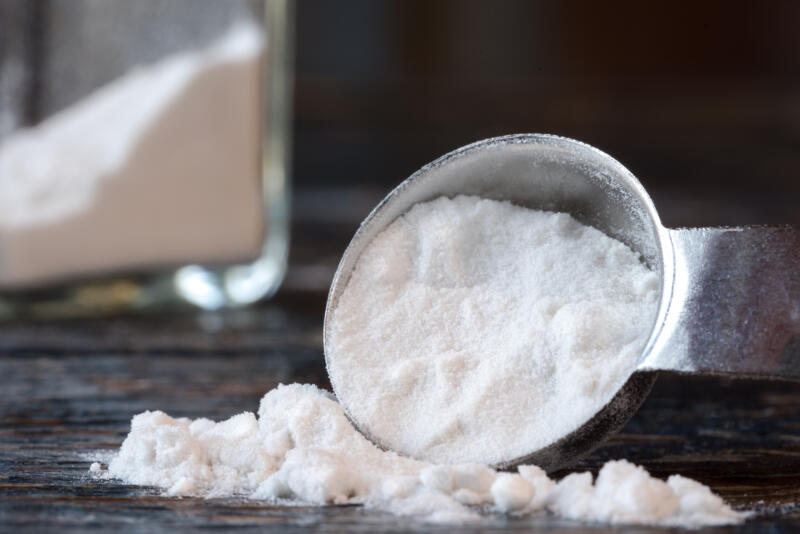
For those with dietary restrictions or preferences, there are alternative methods for adjusting mashed potatoes.
Gluten-free arrowroot starch can be used as a thickening agent for those with gluten intolerance.
Dairy-free milk alternatives like almond milk or soy milk can be used in place of traditional milk or cream for those who are lactose intolerant or following a vegan diet.
Common Mistakes to Avoid
When making mashed potatoes, there are a few common mistakes that can affect the consistency.
Overmixing
Overmixing can make your mashed potatoes gluey. It’s best to mash until just smooth and no more.
Undercooking the Potatoes
Undercooked potatoes won’t mash properly, leading to a lumpy texture. Make sure your potatoes are cooked until they’re easily pierced with a fork.
Adding Cold Milk, Cream, or Butter
Adding those ingredients can bring down the temperature of your potatoes, making them less fluffy.
Always use warm milk, cream, or melted butter for the best results.
Closing Thoughts
Mastering the art of perfect mashed potatoes lies in understanding the basics.
Choosing the right type of potatoes, boiling and draining them correctly, and carefully adjusting the ingredients are key steps in this process.
With these fundamentals in mind, you’re well on your way to creating mashed potatoes that are consistently delightful in both flavor and texture.
If you have any questions or comments or if you’ve discovered a new technique for thickening mashed potatoes, we’d love to hear from you.